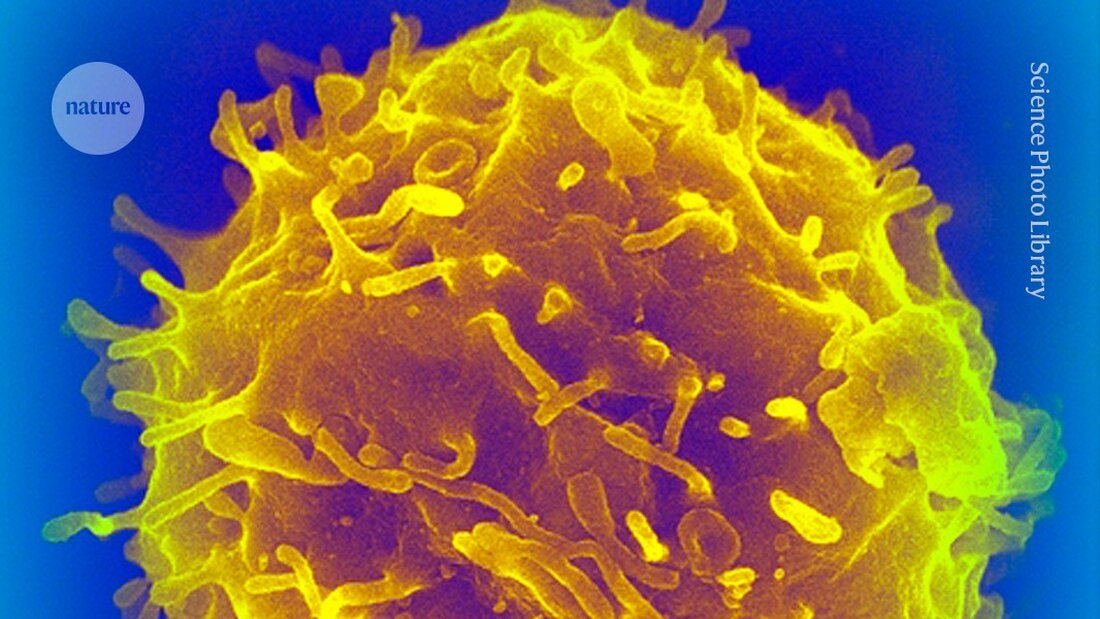Do stem cell transplants increase the risk of cancer? Notes from long-time recipients
A recent study shows that stem cell transplants do not result in an increased risk of cancer in long-term recipients.

Do stem cell transplants increase the risk of cancer? Notes from long-time recipients
Since the first hematopoietic stem cells were successfully transplanted into people with blood cancer more than 50 years ago, researchers have asked themselves whether these mutational cancer could develop. A unique study 1, which studied the longest-lived transplant recipients and their donors, has found that people who receive donor stem cells do not appear to be at increased risk of such mutations.
The results are surprising but reassuring, says Michael Spencer Chapman, a hematologist at the Barts Cancer Institute in London.
“This is fantastic news for people going through these therapies,” says Alejo Rodriguez-Fraticelli, a quantitative stem cell biologist at the Institute for Biomedical Research in Barcelona, Spain.
Blood-forming or “hematopoietic” stem cells are progenitor cells that reside in the bone marrow and give rise to all types of blood cells. They are used to treat hundreds of thousands of people with blood cancer and bone marrow diseases. The Transplants involve the complete depletion of a person's blood stem cell reserves and their replacement with cells from a healthy donor. But researchers have long wondered whether the pressure on cells could increase the risk of cancer. In rare cases, approximately 1 in 1,000 transplants, donor cells develop into a tumor in the recipients.
Latest research
The latest study, published this week in Science Translational Medicine, examined mutations in specific genes linked to cancer. It has been suggested that these mutations may give hematopoietic cells a growth advantage in transplant recipients, causing them to divide and multiply rapidly as the recipient ages and eventually progress to leukemia.
Some of the first transplants were performed at the Fred Hutchinson Cancer Center beginning in the late 1960s. In 2017, Masumi Ueda Oshima, a clinical researcher who studies aging after transplants at the Fred Hutchinson Cancer Center in Seattle, Washington, and her colleagues decided to contact the recipients of these transplants as well as their donors to collect blood samples and compare how the cells had aged. “It was really a big fishing expedition,” she says.
The team collected blood samples from 32 individuals - 16 donor-recipient pairs - who had received their transplants between 7 and 46 years previously. They used a highly sensitive technique to sequence genes known to acquire mutations linked to bone marrow cancer.
Team members found cells with mutations in all healthy donors, even those as young as 12 years old. The older the donor, the more common the mutations were in their blood, but overall the frequency remained low - just one in a million base pairs sequenced.
The researchers then compared the mutation patterns in 11 donor-recipient pairs for which they had access to donor blood samples from the time of the transplant. They found similar mutation patterns in both groups. On average, mutations occurred at a rate of 2% per year in donors and 2.6% per year in recipients. “Surprisingly, there are actually very few new mutations in the stem cells that arise from the transplant process,” says Spencer Chapman. This suggests that transplant recipients' cells age at a similar rate to those of their donors, and they are not at increased risk of developing mutations that could predispose them to blood cancers.
The fact that the mutations remain stable for so long after transplantation shows that “the regenerative ability of the hematopoietic system is truly remarkable,” says Ueda Oshima.
Rodriguez-Fraticelli points out that while the results are reassuring, they are based on a small number of individuals, making it difficult to draw general conclusions.
Complex aging
Spencer Chapman observed similar results in a separate study of donor-recipient pairs 2, which was published as a preprint in April 2023. His study included 10 transplant recipients who had received hematopoietic cells from their siblings between 9 and 31 years previously. However, in addition to studying changes in specific genes linked to cancer, they extracted and cultured hematopoietic cells in a laboratory and sequenced the entire genomes of individual cells. On average, they found that recipients had only slightly more mutations than their donors, adding just 1.5 years of normal age buildup - a similar finding to Ueda Oshima's.
When she and her colleagues specifically looked for mutations that gave cells a growth advantage, they found that cells with just one of these mutations were found at similar levels in both recipients and donors. However, cells with two or more of these beneficial mutations were present in higher quantities in recipients than in donors. This result could help explain why, in rare cases, transplanted cells can develop tumors.
But more work is needed to better understand the implications of these aging processes on cancer risk and immune function, says Spencer Chapman.
Both studies could have implications for people receiving stem cell transplants and blood-based gene therapies to treat Sickle cell anemia receive. More and more of these therapies are “coming into the mainstream” and are being administered to children who, for example, will depend on the transplanted cells for the rest of their lives, says Spencer Chapman.
-
Ueda Oshima, M. et al. Sci. Transl. Med. 16, eado5108 (2024).
-
Campbell, P. et al. Preprint at Research Square https://doi.org/10.21203/rs.3.rs-2868644/v1 (2023).

 Suche
Suche
 Mein Konto
Mein Konto
